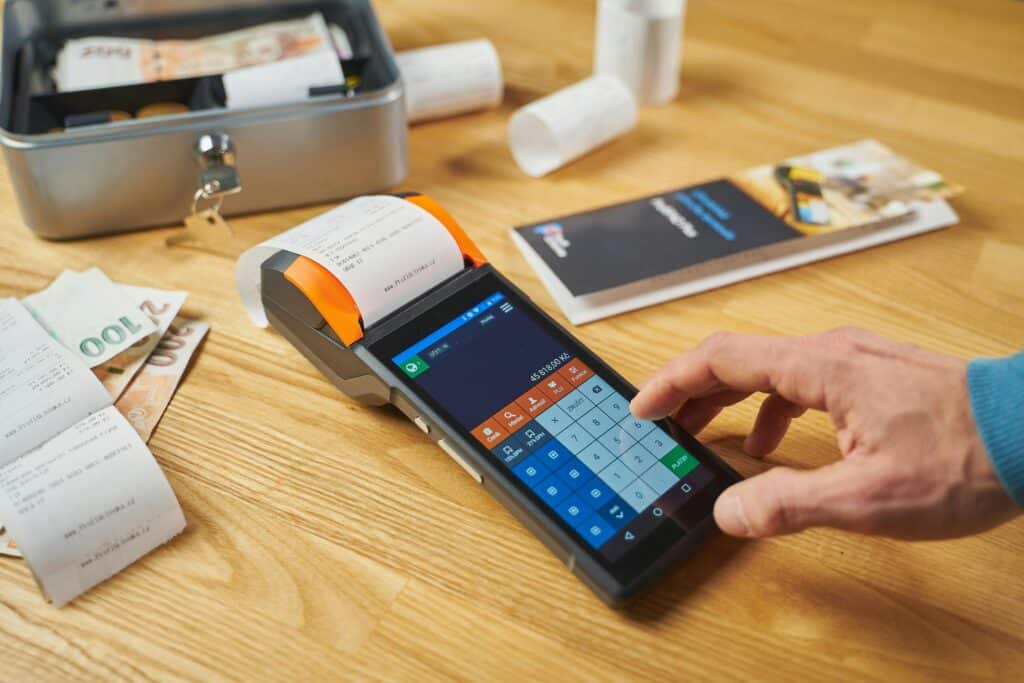Key Takeaways:
- Dynamic pricing in retail adjusts prices based on real-time market conditions, helping stores maximize revenue while staying competitive
- Technology and data analytics make implementing smart pricing strategies easier than ever, even for small retailers
- Success requires continuous monitoring and adjustment, but the payoff can be significant – some retailers see 20-25% profit increases
Table of Contents
- Understanding Dynamic Pricing in Retail
- How Retail Dynamic Pricing Works in Practice
- The Pros and Cons You Need to Know
- Building Your Smart Pricing Strategy
- Technology and Tools That Make It Happen
- Avoiding Common Pricing Mistakes
- Your Implementation Roadmap
Understanding Dynamic Pricing in Retail
Dynamic pricing in retail refers to adjusting prices based on current market conditions, rather than maintaining fixed prices for extended periods. Consider how gas stations adjust prices or airlines change ticket costs – retail stores can employ similar strategies.
What drives these price changes? Several key factors:
Demand patterns – When more customers want something, prices can go up slightly. Fewer customers mean it’s time to drop prices. Convenience stores often raise cold drink prices by 50 cents on hot days and still sell more than usual.
Competition – Monitor what other stores charge and respond strategically. You don’t always need to match exactly – sometimes being 10 cents higher works fine if you offer better service.
Inventory levels – Too much stock taking up space? Lower prices to move it. Running low on popular items? Consider a slight price increase.
Time and weather – Different times bring different shoppers. Morning customers grabbing coffee might pay more than afternoon browsers. Weather matters too – ice cream sells better (at higher prices) when it’s hot.
The beauty of retail dynamic pricing? It works for any size store. You don’t need to be a major chain. Even single-location shops can boost profits with basic dynamic pricing. Start simple and build from there.
How Retail Dynamic Pricing Works in Practice
Implementing dynamic pricing in retail stores is simpler than most people think. Forget about prices changing every five minutes – that’s not realistic. Most stores change prices 2-3 times daily for select items.
Here’s a typical grocery store schedule:
| Morning (6 AM – 10 AM) | Midday (10 AM – 2 PM) | Evening (6 PM – close) |
| Coffee: Regular pricing | Lunch items: Peak pricing (+10-15%) | Prepared foods: Deep discounts (30-40% off) |
| Prepared foods: Lower “early bird” prices | Beverages: Slight increase | Next-day expiry: Marked down |
| Breakfast items: Standard rates | Other items: Normal prices | Regular groceries: Standard pricing |
Your POS data analysis reveals customer patterns unique to your store. Maybe your rush is at 7 AM near a factory, or 6 PM in residential areas. Track when people buy what and at what price points.
Start with 5-10 items that sell regularly but have price flexibility. Prepared foods, beverages, and seasonal items work great. Avoid staples like bread or milk – customers remember those prices and expect consistency.
The Pros and Cons You Need to Know
Let’s be honest about what dynamic pricing strategies can and can’t do for your business.
The Advantages of Dynamic Pricing in Retail
Revenue typically increases 15-25% even with basic implementation. Small grocery stores see significant profit improvements by optimizing just 20-30 items.
Waste reduction is huge for perishables. Instead of throwing out day-old products, you sell them at discounts.
Competition becomes manageable when your system monitors and responds to market changes automatically. This saves store owners approximately 10 hours per week compared to manual price checking.
The Challenges of Dynamic Pricing in Retail:
Customer confusion happens. Some shoppers don’t understand why prices change and may complain. Clear signage about your pricing approach helps.
Staff training takes time and patience. Your team needs to understand the system and handle customer questions confidently.
A modern POS system is capable of handling frequent updates.
Building Your Smart Pricing Strategy
Creating a smart pricing strategy starts with understanding your customers. Most retail stores have three main shopper types:
- Convenience shoppers – Want it now, will pay more
- Price hunters – Know every store’s prices, chase deals
- Regular customers – Shop consistently, value familiarity
Once you know your customer mix, identify which products have pricing flexibility:
| High flexibility: | Low flexibility: |
| Prepared foods | Cigarettes |
| Private label items | Milk and bread |
| Seasonal goods | Newspapers |
| Beverages |
Pick one category to start. Some deli businesses begin with prepared foods, using simple rules: sandwiches typically cost $8.99, $10.99 during the lunch rush (12-1 PM), and $6.99 after 3 PM.
Your risk management plan should set boundaries – maybe a 20% maximum increase and a 40% maximum discount. This prevents errors and maintains brand consistency.
Technology and Tools That Make It Happen
The right technology transforms dynamic pricing from a hassle into an advantage. While dynamic pricing requires thoughtful implementation, having a reliable POS system as your foundation makes all the difference.
Start with the correct point of sale (POS) foundation:
NRS POS provides the essential building blocks for retail operations, including:
- Real-time inventory tracking to monitor stock levels
- Detailed sales analytics showing purchase patterns by time and day
- Cloud-based software with automatic updates
- Integrated barcode scanning for quick price lookups
- Customer loyalty programs
The benefits of POS systems, such as the NRS POS, include having all your sales data in one place. This data becomes crucial when implementing dynamic pricing – you need to know what sells when and at what price points.
Building dynamic pricing on top of your POS:
The NRS POS provides the data foundation you need. Many store owners use the NRS POS reports to:
- Identify peak sales times for different products
- Track inventory levels that trigger markdown decisions
- Monitor which items have price sensitivity
- Analyze customer purchase patterns
Making it work in practice:
Start simple. Use your POS data analysis to identify patterns, then manually adjust prices for a few test items. As you learn what works, you can invest in more sophisticated tools.
The NRS system’s inventory management features help track when items need markdowns. Their vendor management system lets you monitor costs and margins effectively. When combined with the right dynamic pricing strategy, these tools provide small retailers with the foundation to compete effectively.
Many retail POS system store types successfully implement dynamic pricing by starting with their POS data and building from there. The key is having accurate, real-time information, which modern POS systems provide.
NRS AI Product Recommendations: Smart Inventory for Smart Pricing
Dynamic pricing works best when you’re stocking the right products in the first place. The NRS AI Product Recommendations feature takes the guesswork out of inventory decisions by analyzing what sells successfully in stores like yours in your specific area.
This feature helps support your dynamic pricing strategy in several ways:
Identify high-margin opportunities – The AI recommendations highlight profitable products you might be missing, giving you more items with pricing flexibility for your dynamic strategy.
Reduce dead inventory – By stocking products your neighborhood wants, you spend less time marking down slow-moving items and more time optimizing prices on products that sell.
Stay ahead of local trends – When new products start trending in your area, you’ll know early and can implement strategic pricing from day one.
Make confident decisions – Access these insights directly through your NRS Merchant Portal or the My NRS Store mobile app, whether you’re at the counter or meeting with suppliers.
The combination of inventory selection and dynamic pricing creates a powerful advantage. You stock what your customers want, then optimize pricing to maximize both sales and margins.
Avoiding Common Pricing Mistakes
Changing prices too often confuses customers. Limit changes to 2-3 times daily maximum.
Ignoring regulars damages loyalty. Keep staple items stable while optimizing extras and impulse buys. Your local customers matter most.
Complex pricing frustrates everyone. Pick one variable (time, membership, OR volume,) not all three.
Weak technology wastes time. If your system can’t handle your strategy, consider either upgrading or simplifying.
Poor communication breeds distrust. Use clear signage to explain your approach—train staff to answer questions positively.
Your Implementation Roadmap
Week 1-2: Analyze your data
- Pull 3-6 months of sales reports
- Identify Top 20 sellers
- Find pricing flexibility opportunities
- Select 5-10 test items
Week 3-4: Create simple rules
- Design basic price variations
- Set maximum/minimum boundaries
- Document everything clearly
Week 5-6: Prepare technology
- Ensure the POS can handle changes
- Consider electronic shelf labels
- Set up tracking systems
Week 7-8: Train and launch
- Educate staff thoroughly
- Create customer communication
- Start with a soft launch
- Monitor everything closely
Month 2-3: Expand gradually
- Analyze results
- Adjust rules based on data
- Add five items monthly
- Keep refining the approach
Long-term success tips:
- Stay flexible with seasons
- Listen to customer feedback
- Track the right metrics
- Prepare for competition
- Keep learning and adapting
Even 5% margin improvement makes a huge difference for small retailers.
The future of ecommerce includes dynamic pricing as standard practice. Physical stores must adapt or risk falling behind. Start tomorrow with five items and simple rules.
Frequently Asked Questions
Is dynamic pricing legal?
Yes, with exceptions during emergencies (price gouging) and for regulated products like alcohol in some states. Check local laws.
How much should prices change?
Start with 5-15% variations. Customers barely notice 10% changes, but they significantly impact margins.
What if customers complain?
Train staff to explain value: “We offer fresh items at peak times and great deals during off-hours.” Clear signage prevents most issues.
Which products should never change price?
Keep milk, bread, eggs, baby formula, newspapers, and cigarettes stable. Customers use these to judge overall pricing.
How do I measure success?
Track revenue, margins, waste reduction, customer count, and average transaction value. If three out of five improve after two months, you’re succeeding.








